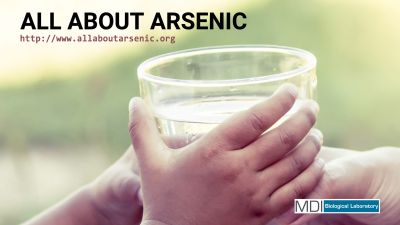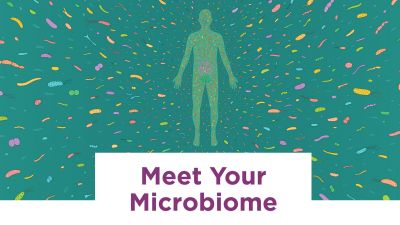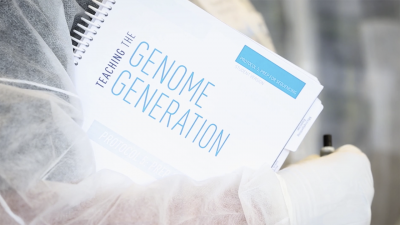UMB CURE Connections: an integral link in a Baltimore minority STEM education pipeline
Project Website(s)
-
Project Description
Prior to COVID, the two major activities of C2 were Saturday programming during the academic year and a summer internship. Saturday programming was comprised of a rotating series of mentored hands-on science projects, STEM education, culturally relevant longitudinal projects and college and career path exploration. The summer internship provided five-week summer programs to rising 9th and 10th grade scholars. Due to the current situation with COVID, all programming was moved to a virtual platform. This past summer, scholars participated in the Community Health Worker Training Program for high school students offered through Morehouse School of Medicine where scholars learned how to promote health education and health literacy in their own communities. School year programming was transitioned to an online platform with three different tracks incorporating asynchronous and synchronous sessions: 1) forensics science; 2) robotics and 3) anatomy.
-
Abstract
Individuals from underrepresented (UR) backgrounds comprise the fastest growing segments of the US population but make up only a small percentage of the biomedical research and healthcare workforce. Workforce diversification is essential to engage this underutilized resource and meet growing US demands in biomedical science and broader STEM fields. Distinct perspectives provided by a diverse workforce stimulate innovation and increase research quality, productivity and consideration of disparities issues. Efforts to realize these benefits of increased diversity in a sustainable manner must begin with early STEM education. To provide this early STEM intervention, the University of Maryland Baltimore Continuing Umbrella of Research Experiences (UMB CURE) Scholars program was developed to provide STEM educational enrichment for UR middle school (MS) students from severely disadvantaged West Baltimore communities. To address the multifactorial barriers to success faced by these students, a holistic approach was taken that leveraged the strong resources of UMB professional schools and partners to integrate robust scholar mentoring, family support, partner school curricula and community outreach. Data from the first two cohorts of scholars demonstrated the program’s positive impact on all stakeholders and indicated that early STEM intervention is an effective approach to engage students from disadvantaged backgrounds, reinforcing the need for such programming in West Baltimore. To build upon the success of the MS program and realize the potential of this early intervention, it is essential to foster the scholars’ continued engagement in science through the high school (HS) transition and progression to college. Indeed, extracurricular structure is particularly important during the HS transition years- years that can be academically and socially challenging for UR students from disadvantaged communities. However, programs to sustain this holistic educational support are lacking in the UMB CURE catchment area. To fill this gap, UMB CURE Connections (C2) will provide robust 9th and 10th grade programming as an integral component of a minority STEM education pipeline that connects UMB CURE MS scholars with strong HS STEM enrichment and a network of minority-focused college programs at UMB and its partner institutions through three specific aims: 1. Provide STEM enrichment curricula centered around culturally relevant themes that incorporate hands-on research, college and career path exploration, community outreach and conference presentations. 2. Utilize near peer and professional mentors from pipeline partners to excite scholars about science subjects and inspire them to pursue careers in these fields. 3. Evaluate outcomes to assess the effectiveness of program components in achieving its goals, develop best practices and disseminate this information. Together, C2 and its STEM education pipeline partners provide a path to college and STEM careers for UR students that will increase diversity in the biomedical workforce.
PUBLIC HEALTH RELEVANCE: Diversity in the biomedical workforce stimulates innovation and increases research quality, productivity and consideration of disparities issues; however, underrepresented groups comprise only a small percentage of those employed in health science and broader STEM fields. Efforts to address the need for increased diversity and realize the benefits of a diverse workforce must begin with early STEM education. Toward this goal, the UMB CURE Connections program will provide robust STEM educational enrichment for 9th and 10th grade scholars from disadvantaged West Baltimore communities as part of a minority STEM education pipeline to college and careers in these fields.
-
Dissemination Strategies
Each year, scholars publish their research projects in the UMB CURE Journal of STEM. Below is a link to the UMB CURE Journal of STEM Volume 3 (2020). Scholars worked collaboratively to identify a problem in their local communities, and to develop a community health project idea to solve this problem. They presented their ideas virtually at the STEM Expo.
-
Resources for Sharing
Forensic Science combines the diverse fields of physical and biological sciences to recreate the events surrounding a crime. Within the C2 Forensic Science track, scholars will explore high-profile case studies and conduct various investigations that will immerse them in topics such as fingerprint analysis, ballistics, hair and fiber analysis, toxicology, DNA testing, and blood spatter as a way to explore how chemistry is used in the medical field.
C2 Forensics Science Syllabus 2020_final
The C2 Anatomy curriculum track provides students with engaging and rigorous learning opportunities that immerse them in the study of metabolic diseases and their connection to lifestyle choice and genetics. Scholars are met with the real-world problem of rising diabetes cases across the country and apply principles of nutrition and biology to explore and develop solutions for the problem. Through community case studies and analysis of their own wellness practices, scholars assume the role of engineer to develop a product that can educate others, regulate, or decrease the occurrence of type 2 diabetes.
C2 Anatomy Syllabus 2020 _final
The C2 Robotics curriculum track provides students with an understanding of how robotics and technology can be used in the field of healthcare, while also equipping them with the skills required for coding, programming, web development, and app development. Scholars will demonstrate the engineering design process and high-level problem solving skills as they develop an app that addresses a health issue in our society for JHU APL’s Mobile App Challenge.






